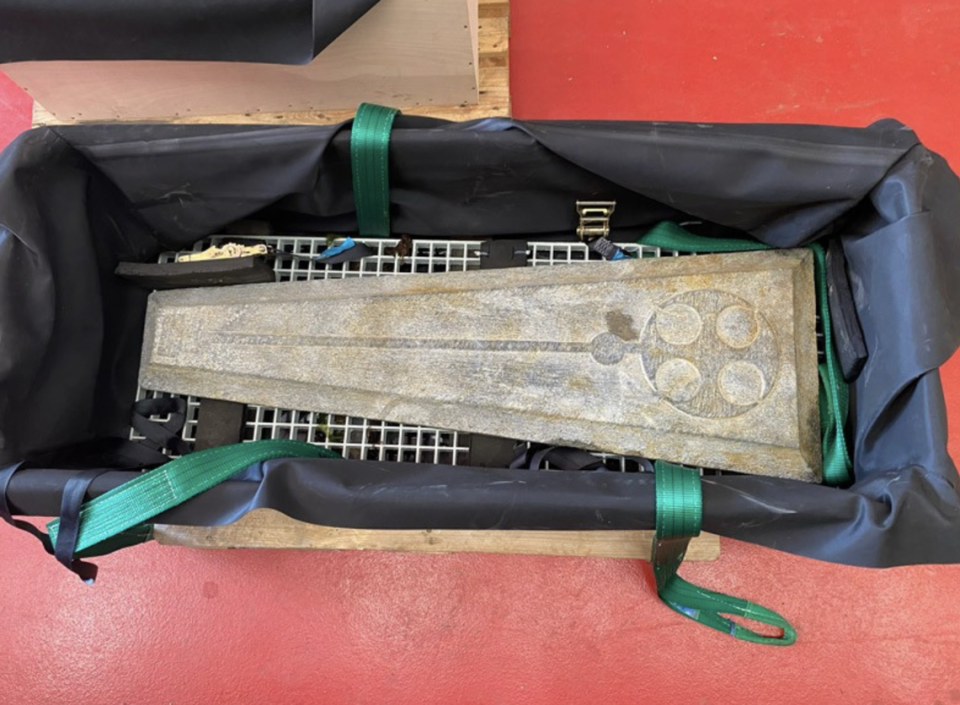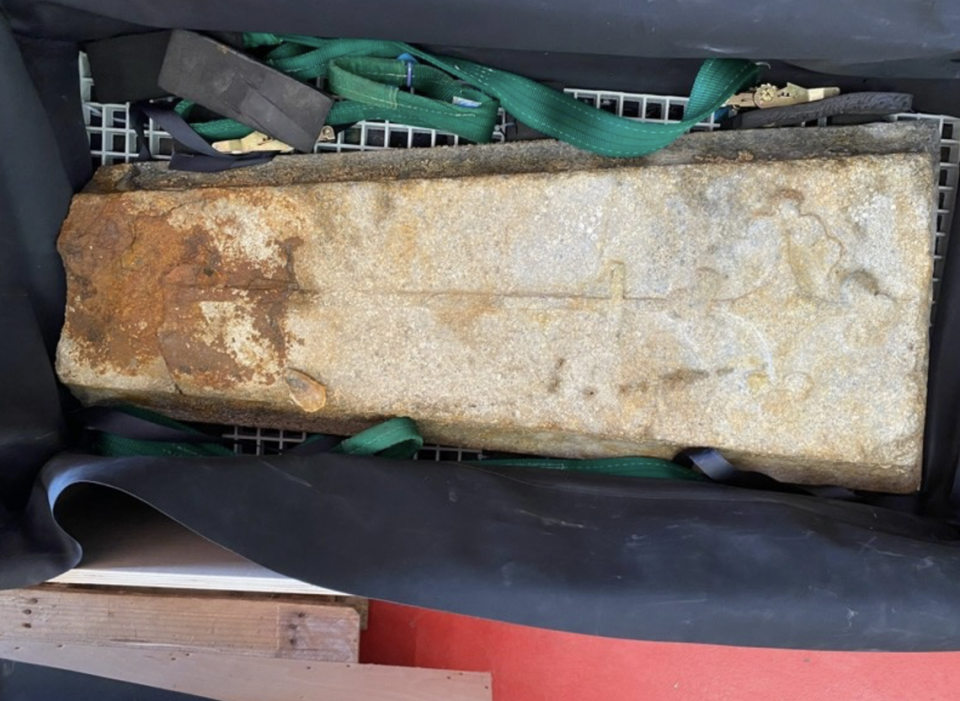Marble grave slabs laid on ocean floor off England for 800 years — until now. See them
Two medieval grave slabs — dating back nearly 800 years — were recently recovered from the ocean floor off the United Kingdom, researchers said.
The large stone pieces were pulled from the Mortar Wreck, a 13th-century shipwreck located off the coast of Dorset, according to a June 7 news release from Bournemouth University.
The vessel sank during King Henry III’s reign, which spanned from 1216 to 1272, and is considered the oldest intact wreck in England.
Uncover more archaeological finds
What are we learning about the past? Here are three of our most eye-catching archaeology stories from the past week.
→Workers stumble upon treasure trove buried 350 years ago in Germany. Take a look
→Mom and her child unearthed odd-shaped rock in garden. They found an ancient artifact
→Farmer picks up 'trash' in field — then realizes he's holding rare Viking weapon
The grave slabs, which were located about 22 feet underwater, were hauled to the surface by maritime archaeologists during a two-hour recovery operation on June 4, university officials said.
Cut from Purbeck marble, the slabs were likely meant to function as crypt monuments or coffin lids for high-ranking members of the clergy.
“Purbeck Marble is one of the most distinctive decorative stones to be used in England’s cathedrals and churches,” according to Historic England, a government body devoted to conserving the country’s heritage.
One of the slabs, which is “immaculately preserved,” measures around 5 feet long and weighs about 155 pounds.

The other is broken into two pieces, which when combined measure about 6.5 feet and weigh about 440 pounds.
Both are adorned with Christian crosses, which were a commonly used grave symbol in the 13th century, university officials said.

“The grave slabs we have here were a very popular monument for bishops and archbishops across all the cathedrals and monasteries in England at the time,” Tom Cousins, the Bournemouth University maritime archaeologist who led the recovery, said in the release.
“Examples have been found in Westminster Abbey, Canterbury Cathedral and Salisbury Cathedral,” Cousins added.
The discovery confirms for researchers that Purbeck marble was being cut in England during the 13th century — a fact that had previously been up for debate.
The stone pieces will be cleaned and conserved before they are eventually put on public display, university officials said.
Roman shipwreck laid in shallow water for 1,700 years. Now ‘unique’ cargo is revealed
Metal detectorist stumbles on 250-year-old artifact linked to a pope, photos show
Ancient musical instruments unearthed in China tomb — with someone’s name. See them

